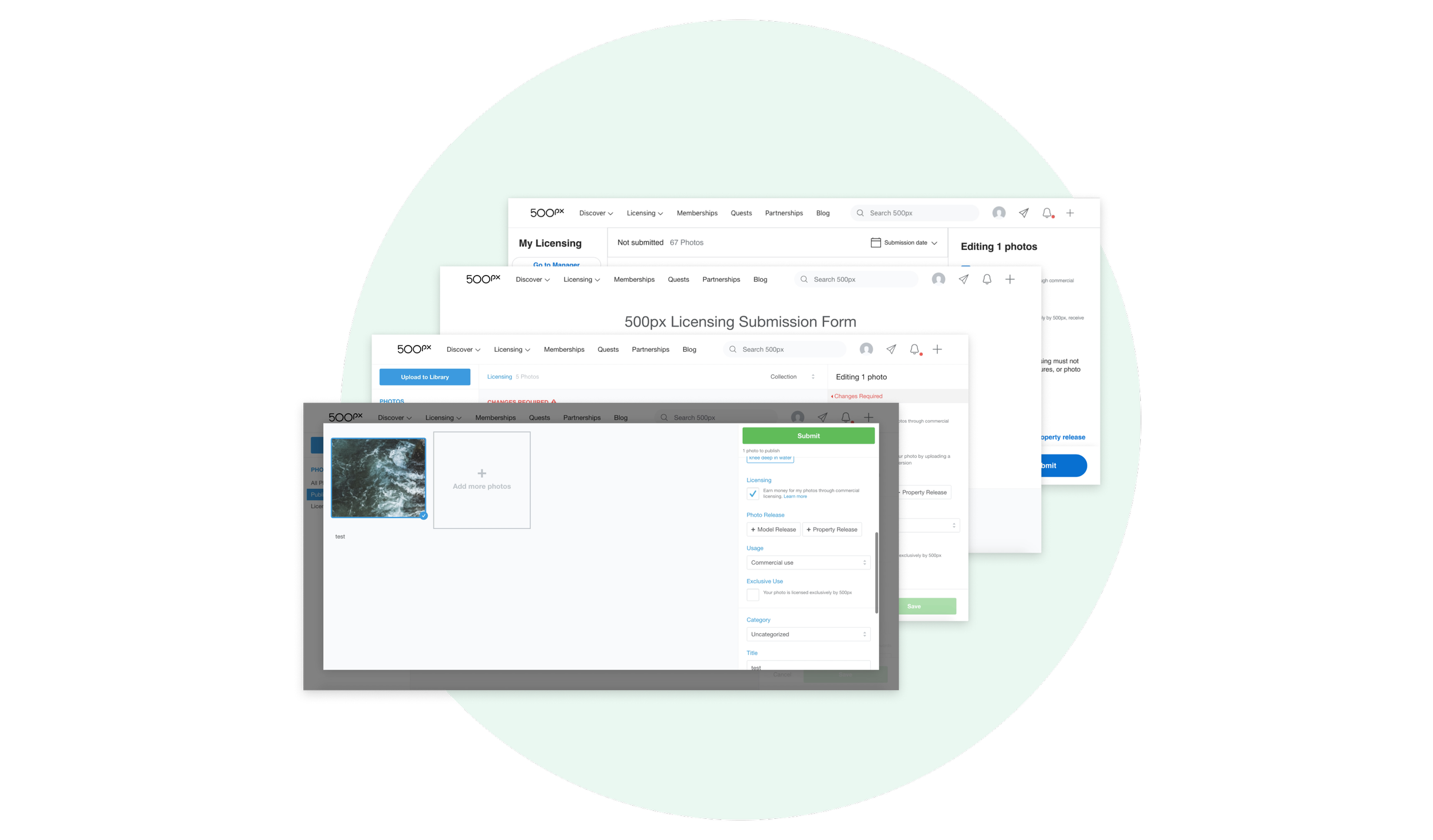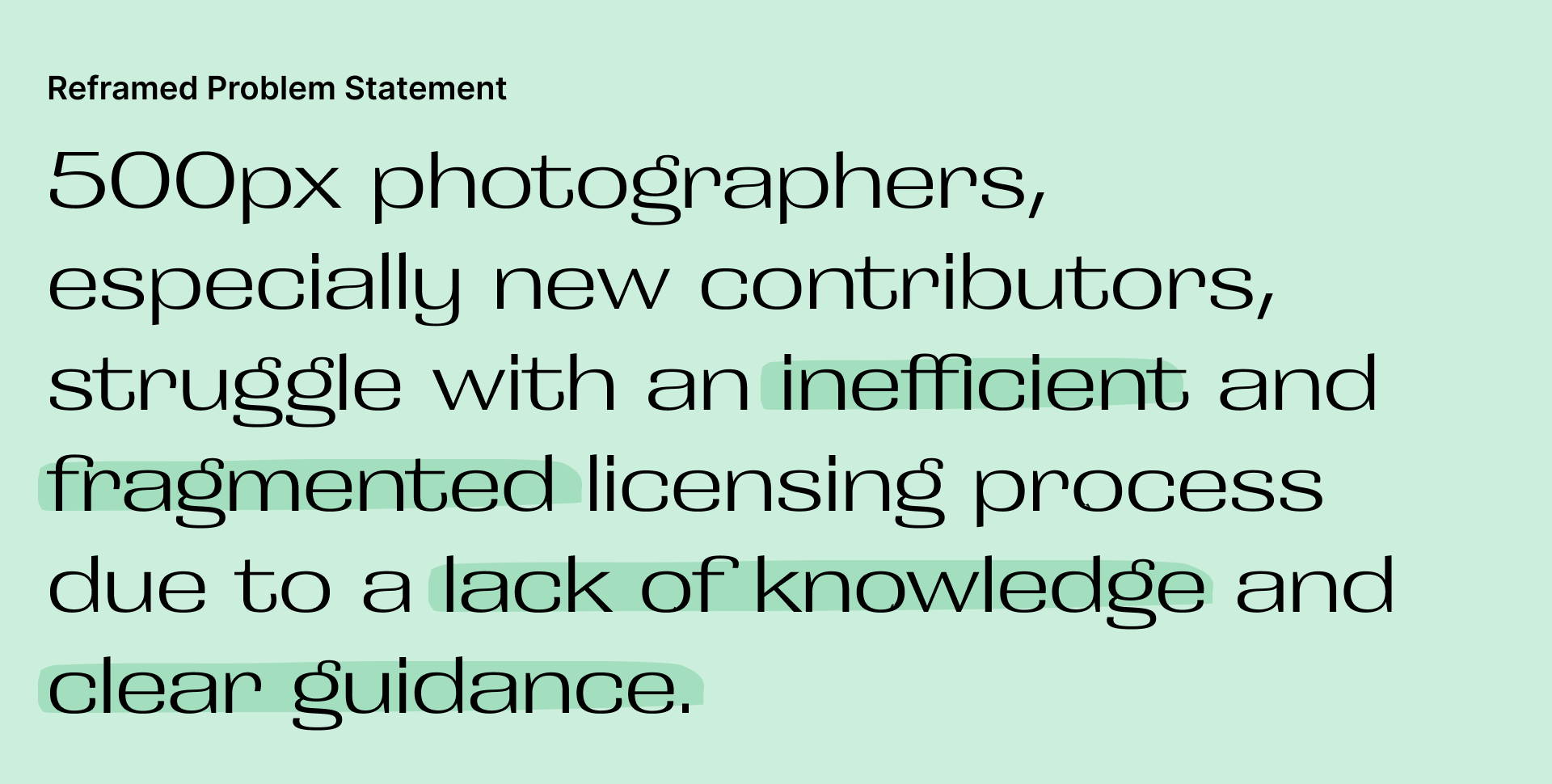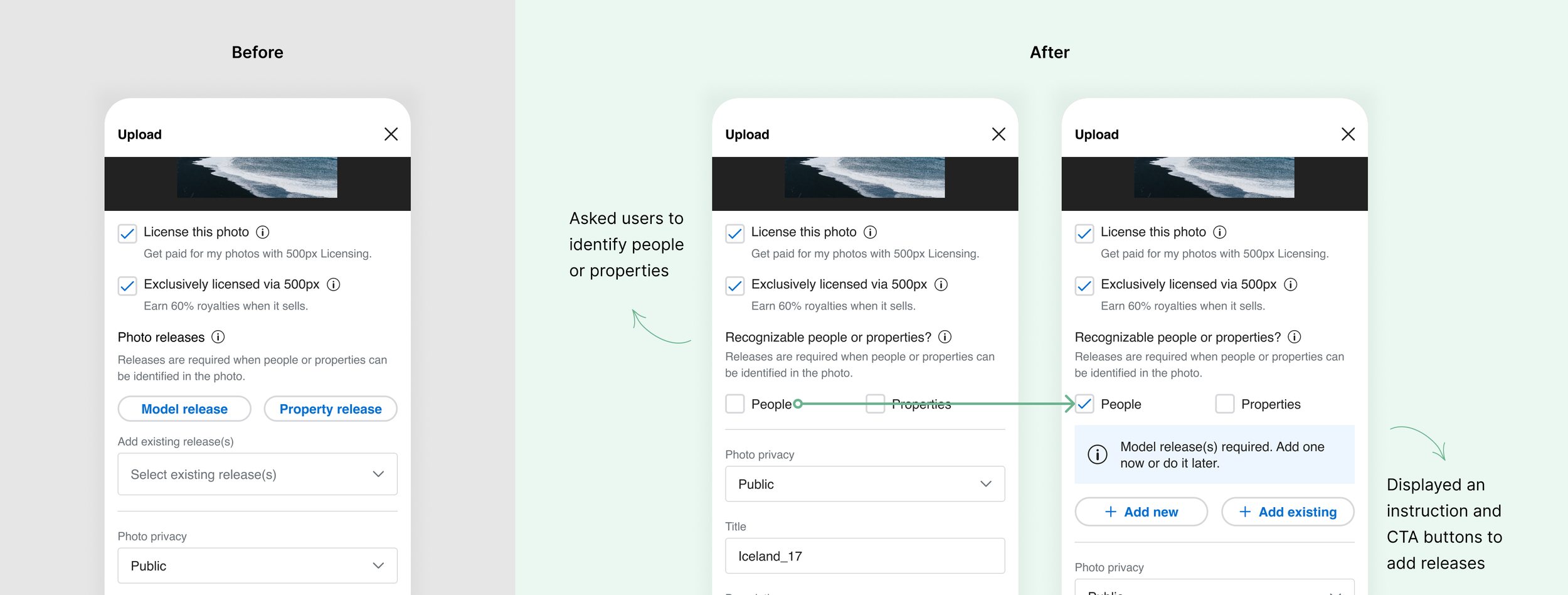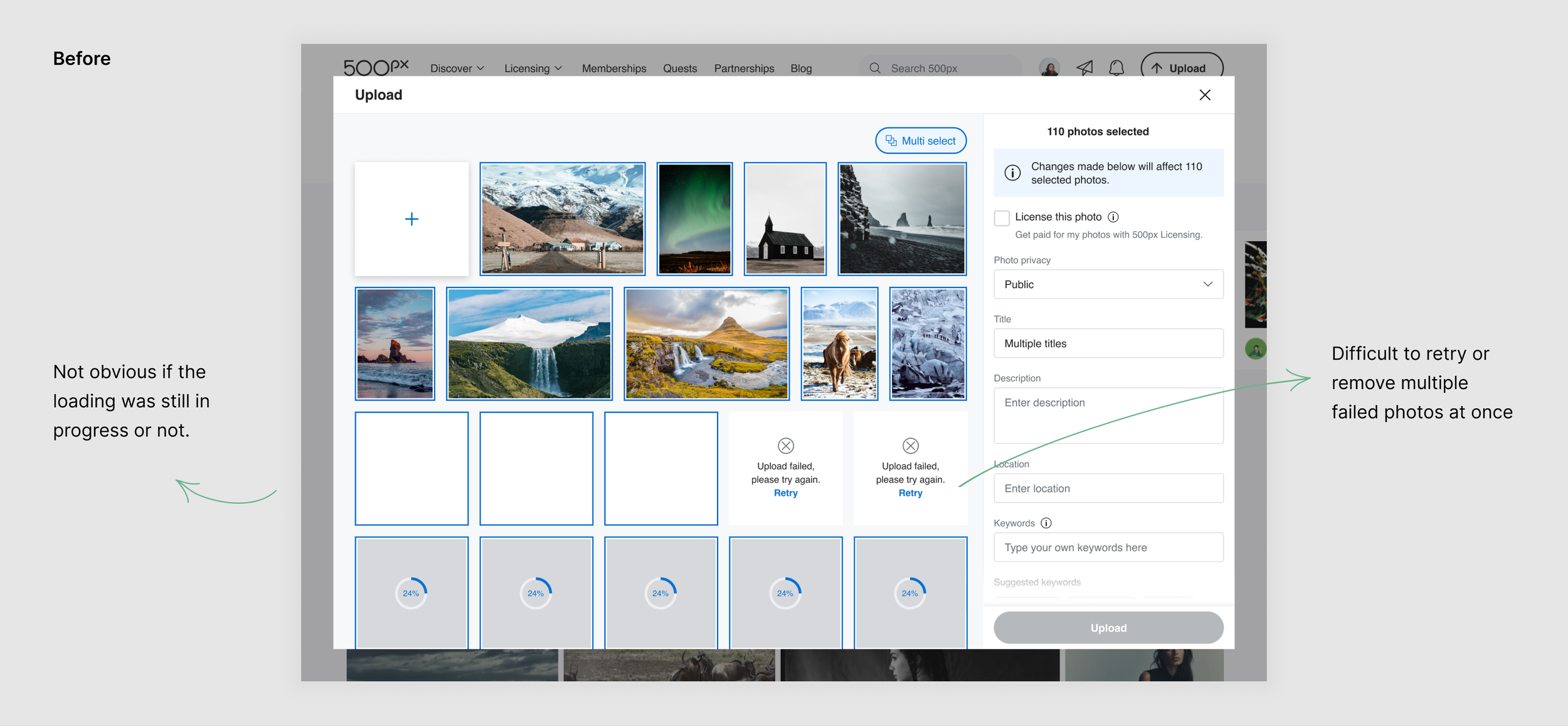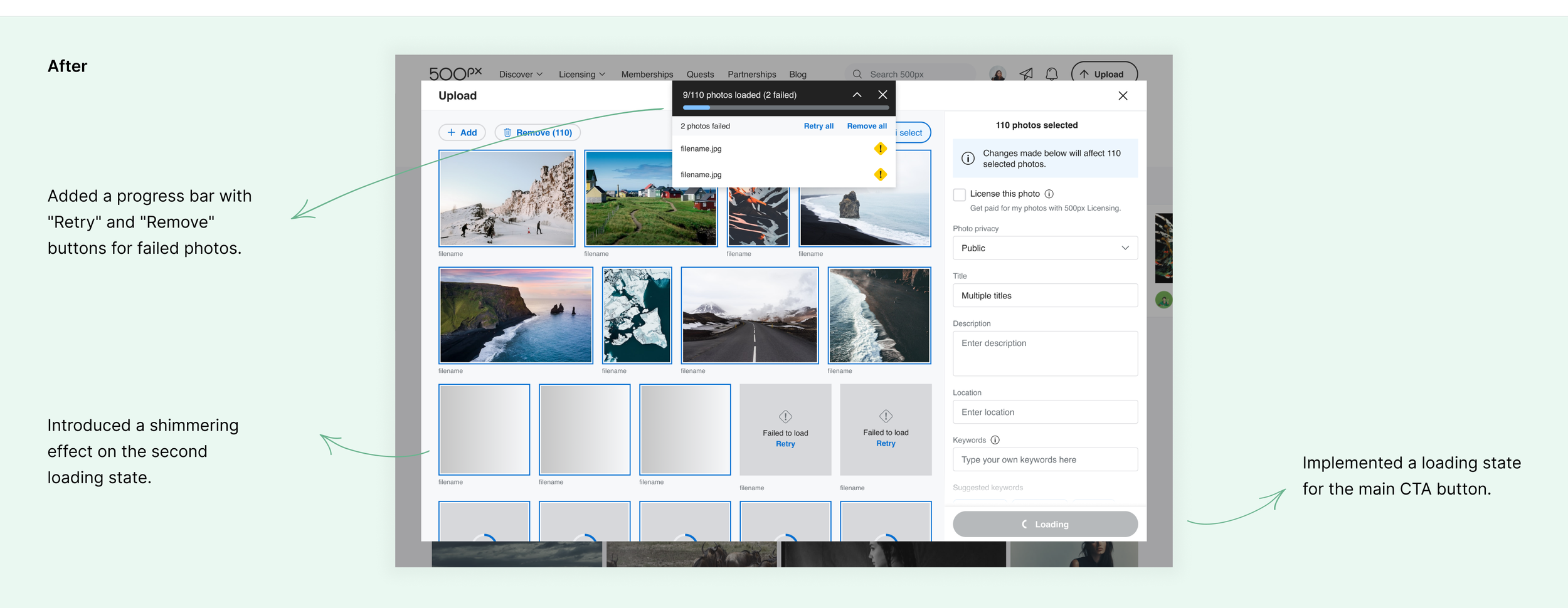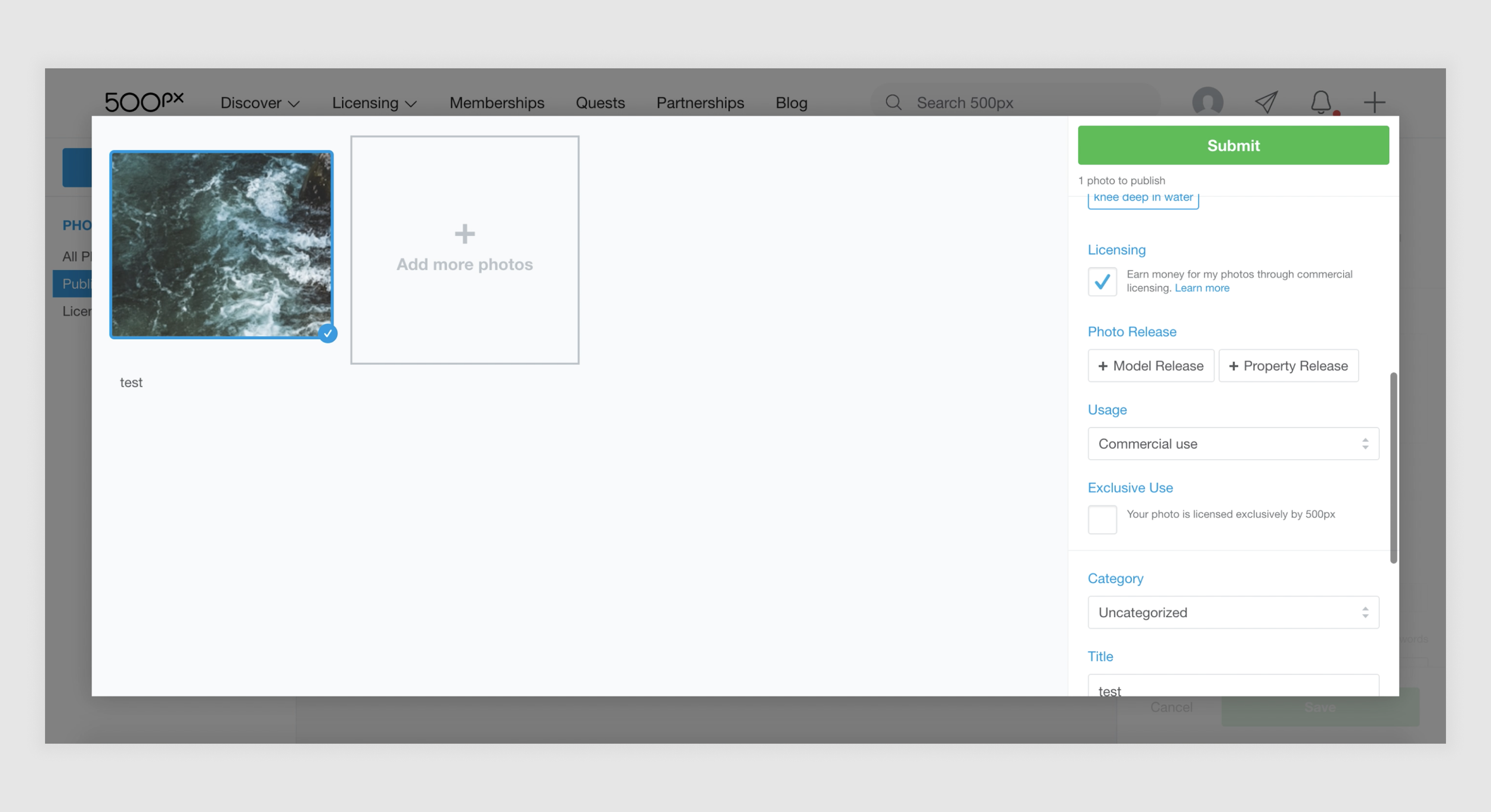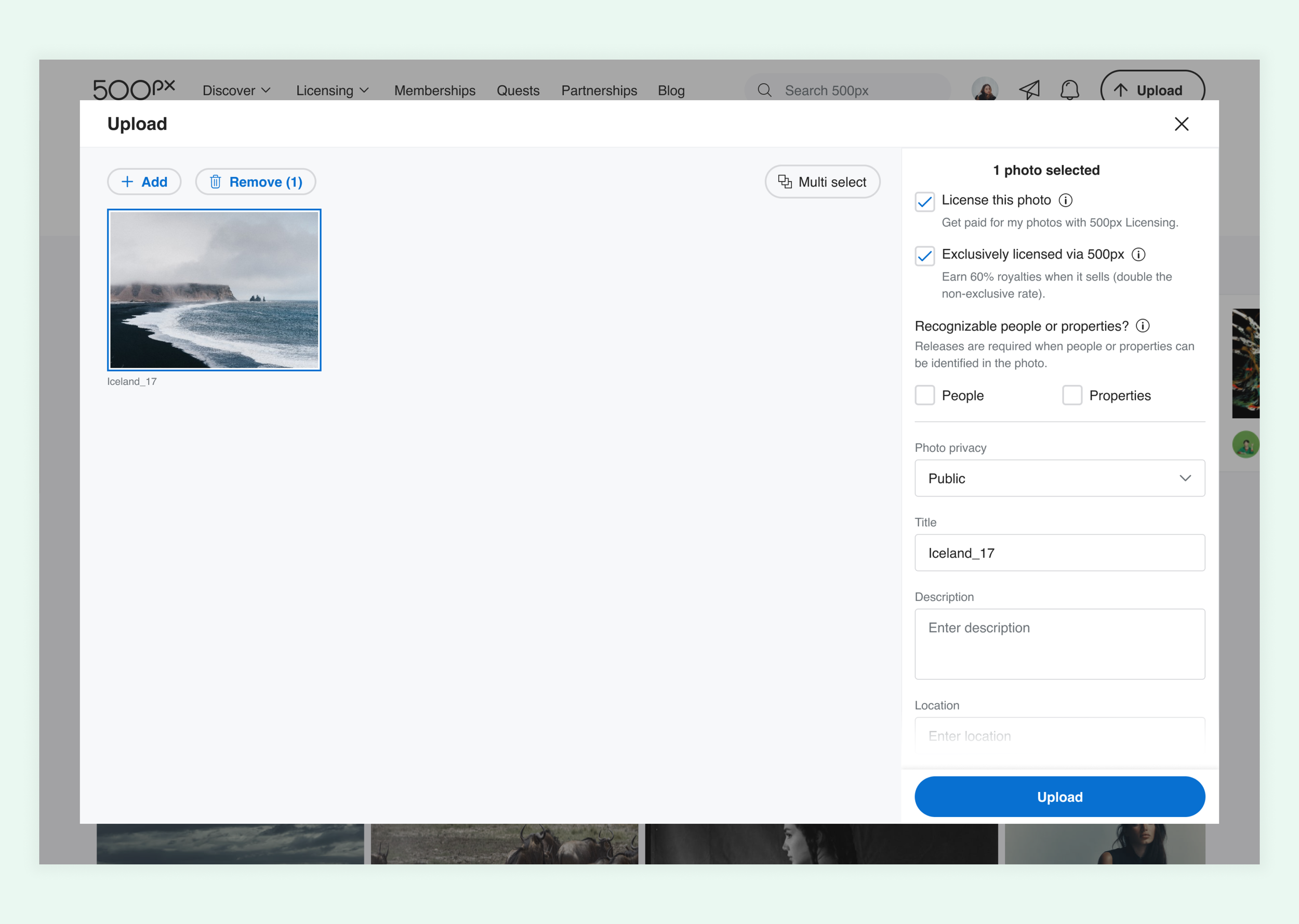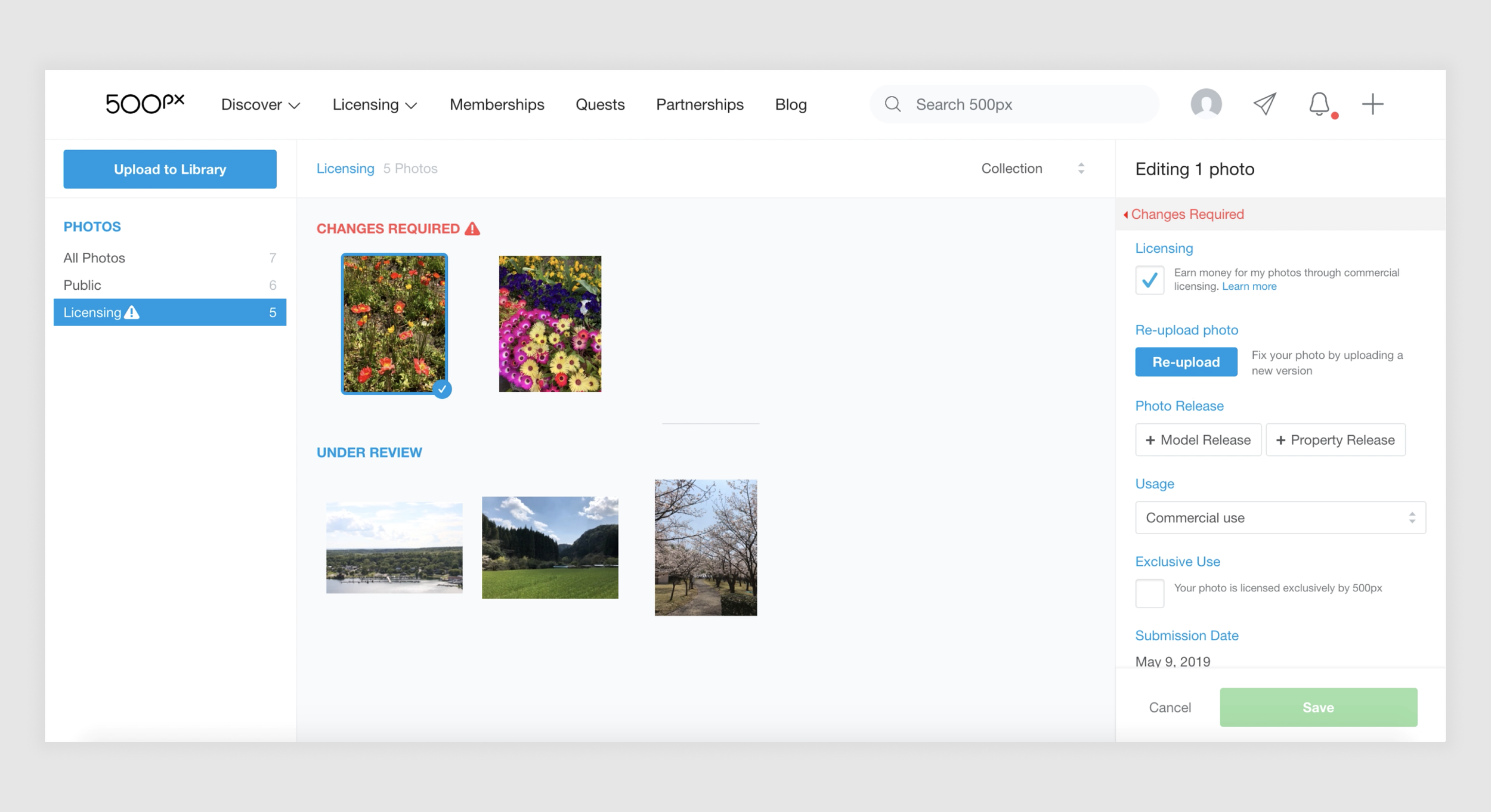500px Licensing
Redesigning the photo uploader and manager to enhance licensing experience
Project TYPE
Refreshing Existing Features (Photo Uploader and Photo Manager)
Team
1 Designer (Myself)
1 PM
1 Eng. Lead & 3 Engineers
My role
Research, Strategy, UX Design, UI Design, and Usability Testing
Success metrics
Increase in Monthly Licensing Submissions and Contributors
Timeline
6 Months
Platform
Web
PROBLEM
The fragmented photo licensing process doubled maintenance efforts and decreased user engagement.
500px, a global photo-sharing platform with over 16 million users, faced challenges due to a complex and fragmented licensing process across four areas, split between Monolith and React.
This led to user confusion, increased development efforts and ultimately a decrease in contributors and submissions.
RESEARCH
Working with constraints in gathering insights
The limited resources, time, and lack of data tracking made it challenging to fully understand the existing state, user needs, behaviours, and pain points.
However, I explored alternative methods to obtain the necessary information to make informed decisions..
Analyzed available data
Working with a Data Scientist to gather and examine available clean data provided valuable insights into the trends of contributors and submissions.
Engaging with the licensing team
Collaboration with the team and analysis of common user queries and concerns revealed user needs and pain points.
Conducting in-house testing
Testing the current licensing flows with staff who matched the primary user profile helped identify usability issues.
key insights
Lack of information and guidance compounded the challenges in the fragmented process.
These essential research findings have come to light:
Low new contributor rate
Only a small percentage of monthly contributors, approximately 21%, were new contributors.
Licensing knowledge gap
The majority of users on 500px had little knowledge about licensing, such as terms and requirements.
Insufficient licensing guidance
The existing process lacked explanation about how licensing works, causing confusion among new contributors.
User Journey of new contributors
Hidden licensing entry point, verification flow leading to dead ends, and confusing terms
When I mapped out a new contributor’s typical journey based on the findings, the opportunities for improvement became more evident.
design strategy
Making the licensing process not only efficient but also beginner-friendly
Streamline user workflow
Minimize unnecessary steps while keeping users in the flow
Clarify licensing terms
Provide helpful information using plain language
Give clear directions
Guide users with clear and actionable calls-to-action
Early Improvements
1. Removing the agreement and verification steps
New contributors faced redirection for licensing agreement and contact verification steps during their initial upload attempt.
These steps were streamlined by merging terms and moving verification to onboarding for improving process efficiency and platform security.
2. Making the entry point more noticeable
To clarify the cluttered upload form and prevent users from missing the licensing checkbox, I reorganized the upload form.
3. Making terms easier to understand
To address new contributors' confusion about 'exclusivity' and 'releases', I introduced these concepts gradually in manageable increments to avoid overwhelming users.
Iteration after usability testing
Clarifying when to add releases
In the high-fidelity design phase, I conducted usability testings and identified user confusion regarding when to add releases. Drawing inspiration from competitors, I made the following adjustments.
Iteration after the launch
Improving bulk upload for licensing experts
After launch, the upload success rate dropped to 75%. We discovered that uploading 100+ photos at once caused the UI to appear frozen, causing early abandonment.
I improved the bulk upload experience to show progress and made error handling simpler, boosting our success rate to a stable 85%.
Solutions
Streamlined Photo Uploader for licensing
Removed extra steps: licensing agreement and contact info verification.
Improved discovery of the licensing entry point.
Simplified the edit form by initially hiding additional licensing items.
Old version
New version
Introduced keyword requirement to reduce photo soft-fails
Temporarily introduced keyword requirements to reduce photo soft failures until the AI model was ready for production.
Automatically scrolled to the keyword section for clear error visibility.
Improved batch upload with progress bar and info banner
Added a progress bar to track multiple uploads with options to retry or remove failed photos.
Provided a banner that clearly communicates editing applies to selected photos.
Edge cases for licensing multiple photos
Clearly communicated licensing requirements when not met.
Created a submission flow for photos meeting requirements among mixed eligibility.
Enhancing clarity in Photo Manager
Added descriptions for each licensing status.
Offered clear instructions to fix failed photo submissions, including links for further guide.
Removed irrelevant form items and displayed a clear CTA button for photos requiring changes.
Old version
New version
Creating accessible and reusable components
Designed all states, including disabled and error.
Created systematically, using an 8-point grid.
Prioritized accessibility, ensuring readable labels and sufficient colour contrast.
Outcomes
Successful business results and satisfied customers
Within three months of launch, we saw significantly increased submissions and contributors, along with positive customer feedback on the new version.
increase in Monthly Licensing Submissions
Increase in Monthly Contributors
Increase in New Contributor Ratio
““It’s definitely way more intuitive and quicker than the old version.””
““It is an easier experience than the previous version. I specifically like that the labels are self-explanatory.””


